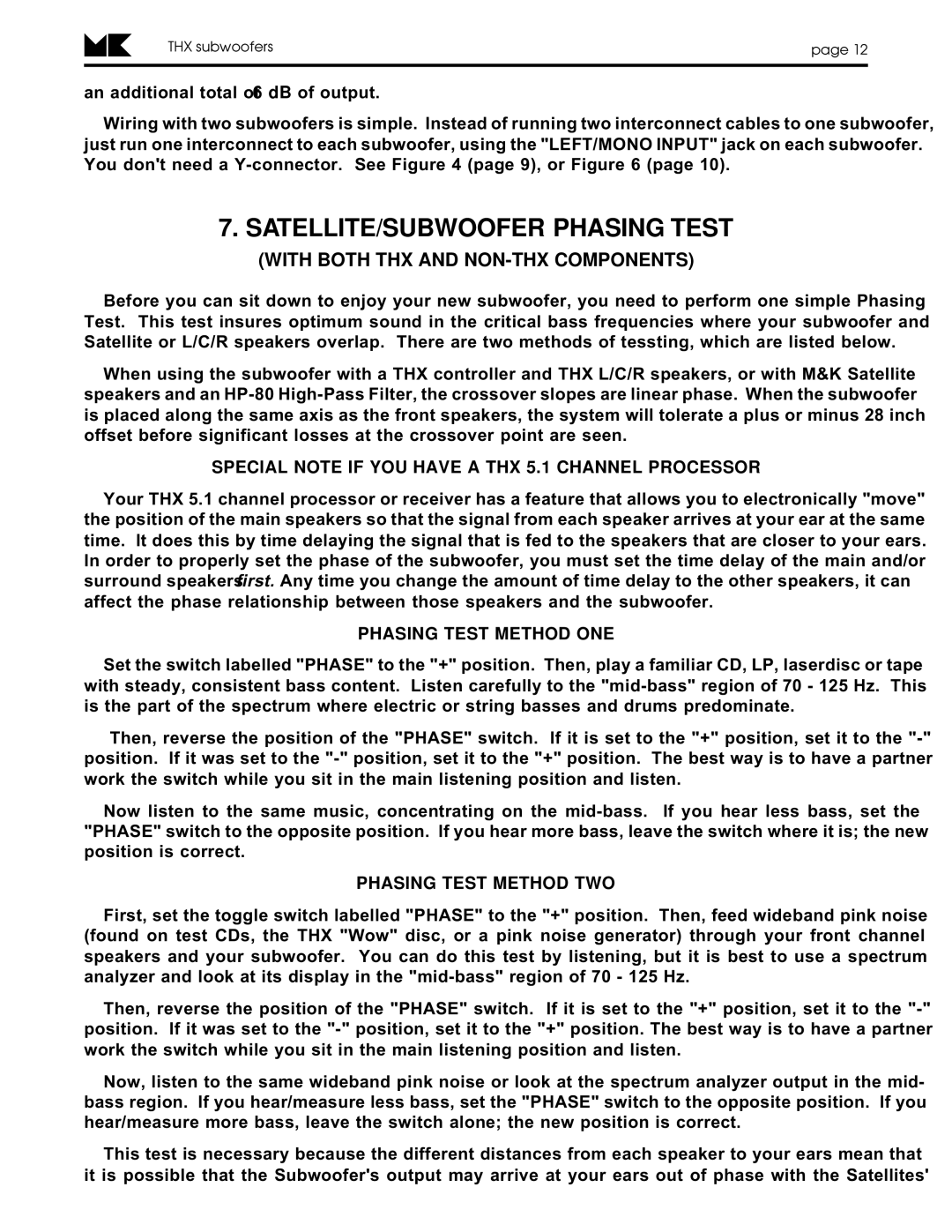MX-350THX, MX-5000THX Mk II, MX-350THX specifications
MK Sound is a renowned name in the world of high-performance audio, and their lineup, particularly the MK-5000THX Mk II and MX-350THX, showcases their commitment to innovation, precision, and immersive sound experiences. The MX-5000THX Mk II is a powerful subwoofer designed to deliver deep, rich bass that enhances any audio system, making it an ideal choice for both home theater enthusiasts and audiophiles.Featuring advanced technology, the MX-5000THX Mk II utilizes a high-excursion 15-inch driver that creates an impressive low-frequency response down to 20 Hz. This subwoofer is THX certified, ensuring it meets rigorous standards for performance and reliability. The design approach of the MX-5000THX Mk II incorporates a dual-firing configuration, allowing it to produce a more balanced and immersive soundstage. Its robust amplifier provides 500 watts of continuous power, with dynamic peaks allowing it to deliver visceral audio that can be felt as much as heard.
In contrast, the MX-350THX is a more compact yet equally formidable subwoofer option. Its smaller 12-inch driver does not compromise performance, delivering an impressive low-end response ideal for smaller rooms or systems where space is a premium. Like its larger sibling, the MX-350THX also boasts THX certification, reflecting its ability to reproduce cinematic sound with accuracy and impact. The subwoofer is engineered with a down-firing design that aids in better integration with room acoustics, providing a smoother overall bass response.
Another standout feature across these models is the flexibility in setup options, with multiple input configurations that support various audio sources, including high-level and low-level inputs. This versatility allows users to seamlessly integrate these subwoofers into their existing home theater or music systems.
In terms of aesthetics, both the MX-5000THX Mk II and MX-350THX are designed with clean lines and a modern look, ensuring they can fit seamlessly into any room decor. With robust build quality, these units are built to withstand the rigors of home use while delivering consistent performance.
In summary, MK Sound’s MX-5000THX Mk II and MX-350THX deliver exceptional quality and performance for both casual listeners and serious audio enthusiasts. With advanced technologies, THX certification, and versatile setup options, these subwoofers represent a significant investment in sound quality, elevating any audio experience to new heights.
